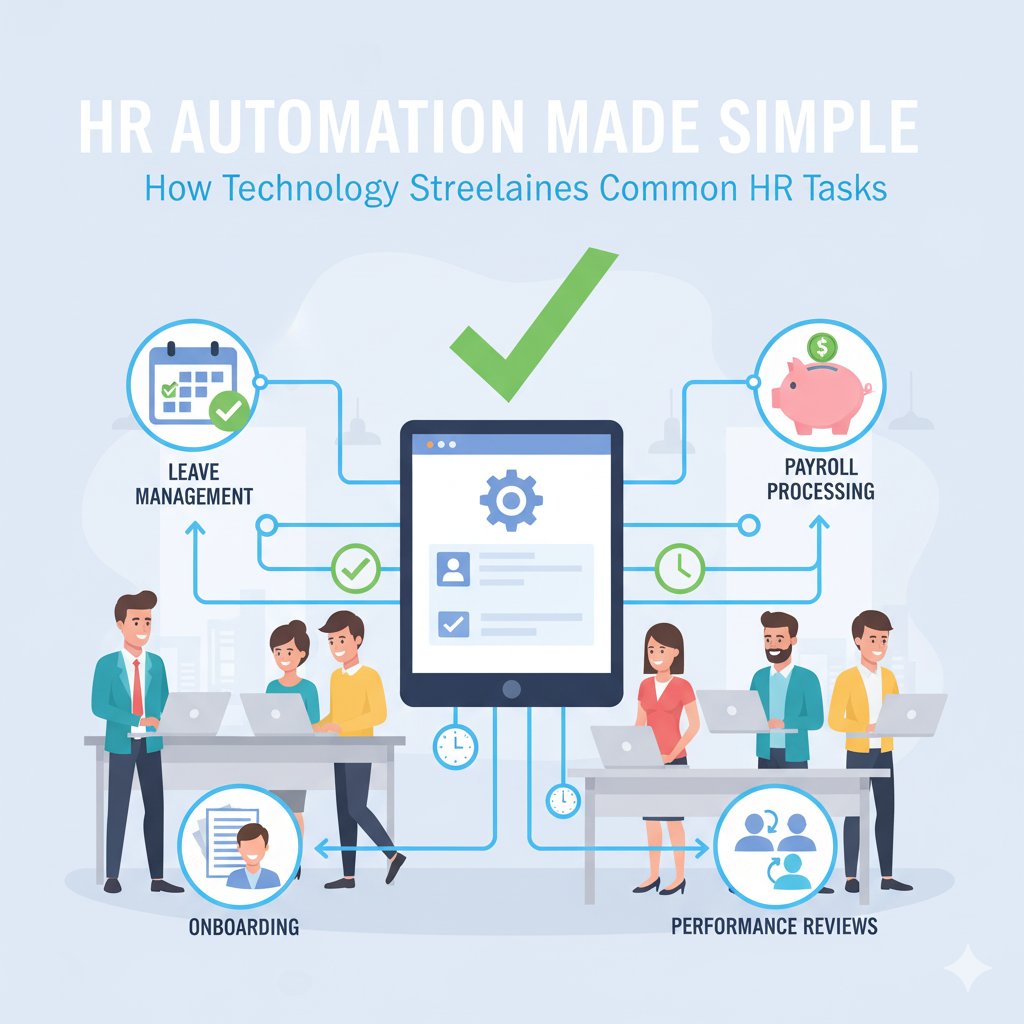Address
Kaypian, San Jose Del Monte City, Bulacan Philippines
Work Hours
Monday to Friday: 8AM - 6PM
Weekend: 10AM - 5PM
Address
Kaypian, San Jose Del Monte City, Bulacan Philippines
Work Hours
Monday to Friday: 8AM - 6PM
Weekend: 10AM - 5PM


Integrated HR. Accurate Payroll.


Integrated HR. Accurate Payroll.

The modern workplace is evolving faster than ever, and human resources (HR) is no exception. From managing employee data to processing payroll and handling recruitment, HR teams often face repetitive administrative work that takes up valuable time.
That’s where HR automation comes in. By using HR technology and digital tools, businesses can streamline common HR tasks, minimize manual errors, and allow HR professionals to focus on what truly matters—people, performance, and strategy.
HR automation refers to the use of software and digital systems to perform routine HR processes with minimal human intervention. Instead of manually handling paperwork or spreadsheets, HR teams can rely on technology to manage everything from attendance to employee onboarding.
In simple terms, automation means letting technology do the repetitive work—accurately, efficiently, and in real time.
Let’s look at the most common HR activities that can be made faster and simpler with automation:
🕒 1. Attendance and Timekeeping
Automated time-tracking systems record employee attendance, log-ins, and log-outs accurately—reducing the chance of disputes and manual errors. Integration with biometric devices or online attendance portals also ensures accuracy and transparency.
💰 2. Payroll Processing
Payroll automation calculates salaries, deductions, and taxes automatically, ensuring employees are paid correctly and on time. This not only saves hours of manual work but also reduces compliance risks.
🧾 3. Leave and Overtime Management
Employees can file leave requests or overtime through self-service portals, while HR systems automatically route them for approval and update records—no paper forms or email chains required.
👋 4. Employee Onboarding
Automated onboarding tools guide new hires through forms, training materials, and introductions, creating a smoother and more engaging first-day experience.
📁 5. Employee Data Management
HRIS (Human Resource Information Systems) can store, update, and secure employee records automatically—making data retrieval easy while maintaining privacy and compliance.
📢 6. Performance Appraisal and Feedback
Automation in performance management allows HR to schedule evaluations, send reminders, and collect feedback through digital forms—ensuring fair and consistent assessments.
⚡ 1. Improved Efficiency
Automation saves time by eliminating manual data entry and repetitive processes, allowing HR to focus on strategic initiatives like employee engagement and retention.
✅ 2. Fewer Errors
Automated systems reduce human errors in calculations, scheduling, and documentation, ensuring higher data accuracy.
💡 3. Cost Savings
Less manual work means reduced administrative costs and improved overall productivity for the HR department.
🌐 4. Real-Time Insights
HR automation tools often include dashboards and analytics, providing instant visibility into workforce trends and HR metrics.
🤝 5. Better Employee Experience
Employees can access information, file requests, and get approvals faster through self-service HR portals, improving satisfaction and engagement.
If your organization is ready to embrace automation, here are a few best practices:
With the rise of remote and hybrid work setups, HR automation is no longer just an option—it’s a necessity.
Automated HR processes empower organizations to operate more efficiently, securely, and transparently.
By investing in the right HR technology, businesses can:
In short, HR automation transforms traditional HR into a strategic powerhouse.
In a world where time and accuracy are crucial, HR automation makes everyday HR tasks smarter, faster, and simpler.
Whether it’s processing payroll, managing attendance, or filing leave requests, automation frees HR professionals from manual work—allowing them to focus on growing people and building better workplaces.
By embracing digital HR tools today, your organization can create a more productive, efficient, and future-ready HR ecosystem.